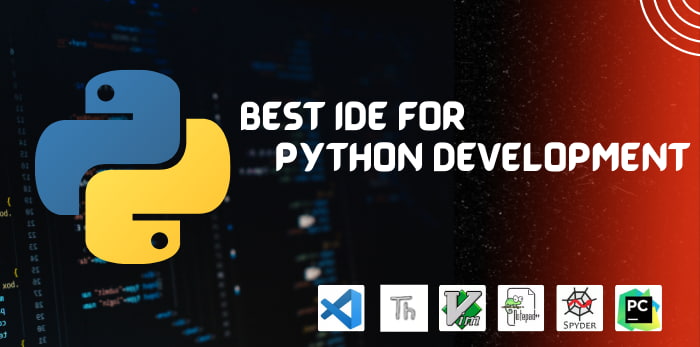We’ve compiled a guide to the best IDEs for Python development.
In the 2021 StackOverflow Survey of Developers, Python is the leading major programming language in the world and is used by 48 percent of engineers working in software. It is among the most popular, yet feared and desired by software developers.
Python is an flexible code language. It is therefore, usable in a wide range of applications in scope from Web development, to 3D modeling software. You can finish a small project using Python through shell. However when it comes to bigger projects, you’ll require the most effective software for Python.
As you are aware there are many Python IDEs available. They may look similar to yours when you are aware of the specifics. In reality, every Code editor (IDE) is distinct from other IDEs by their user interface features, functions, and so on.
We’ve jotted down the most important characteristics of pros and cons of the most widely used Python IDEs below. Let’s get started!
Before proceeding What is IDE?
IDE is the abbreviated form for integrated development software. It can be described as an application pack made up of tools that come in useful in the development and testing of software. An SDLC allows you to utilize numerous tools such as editors, libraries as well as testing and compilation platforms.
IDE is a tool that minimizes the manual labor of a developer and helps automate the process. It brings all the tools in one framework. If there’s no IDE and the developers need to choose to integrate, deploy, and implement the procedure by hand. The ideal tool to use with Python will help simplify this SDLC procedure for your. It will eliminate typing errors as well.
Why the Right IDE Matters
Before we get into our list, let’s think about why picking the right IDE is essential. Imagine constructing your home with only an hammer and nails. Sure, it’s feasible however, why should you put yourself in a position to be more difficult? A great IDE can be described as having a complete toolbox. It includes syntax highlighting, code completion tools for debugging, syntax highlighting and much more, all created to make your programming experience more enjoyable and productive.
1. PyScripter
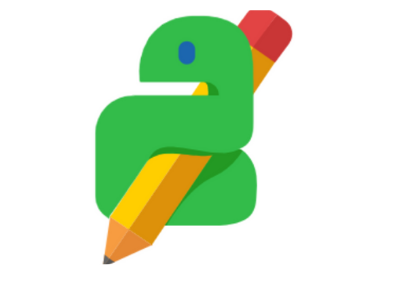
PyScripter provides you with every feature that you expect in the best IDE for Python. The best thing is, here, it comes in a lightweight package. PyScripter is natively compiled for Windows. It consumes minimal memory but gives maximum performance.
PyCsripter is an open-source IDE developed in Delphi by extending Python scripts.
Eye-catchy features:
- Type: IDE
- Price: Free
- Platform support: Windows
- Integrated unit testing
- Syntax highlighting editor
- It provides the users with Python tools like TabNanny, PyLint, Profile, etc.
- Great assistance in encoded Python source
- Full Python debugging to implement remote debugging
PyScripter Pros:
- Code explorer
- Remote Python debugger
- Find and Replace in Files
- Run and debug files from memory
- Expression testing regularly
- Highly configurable Python Script
- You can run the Python version as per your choice via command line parameters.
PyScripter Cons:
- It doesn’t offer sufficient pro versions. And, a few advanced features are not always available.
2. PyCharm
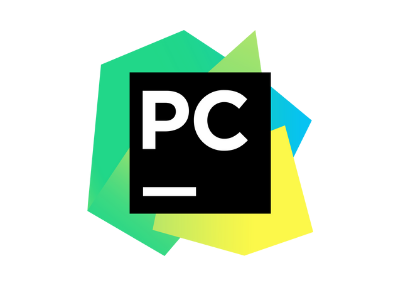
PyCharm is one of the most popular Python IDEs.It is the brainchild of famous data scientist JetBrains. If you are a developer and involved in a productive python programming project, then PyCharm is the IDE you need right now.
PyCharm supports you in writing a neat and easily manageable code. And most importantly, it increases your productivity. You can save time, increase profit, and manage your routine tasks flawlessly when you take the smart assistance of PyCharm.
Eye-catchy features:
- Type: IDE
- Price: $199 for the first year of using
- Platform support: Windows, Mac, Linux
- You get an intelligent, best python editore, safe and fast refactoring, and smart code navigation.
- PyCharm is considered one of the best IDEs for Python because of its robust integration with the Python console, scientific stack, and iPython Notebook.
- PyCharm provides you with tools for managing databases. It has integrated features like testing, debugging, profiling, deployments, and remote development.
- PyCharm gives you great support in Python web development frameworks, HTML, Angular JS, CSS, JavaScript, Live edit features, and so on.
PyCharm Pros:
- PyCharm gets you a customizable interface to increase productivity.
- Cross-app development is another notable advantage of using PyCharm. Developers can explore it to write scripts on different platforms.
- PyCharm comes with multiple cost-cutting factors. As a result, you get support in various frameworks.
- Developers get an intelligent platform to implement quick fixing, error detection, and auto code completion.
PyCharm Cons:
- It may not seem easy when you install it for the first time.
- Sometimes it can hang up.
- It is one of the costliest Python IDEs.
3. SPYDER

Here comes another most used IDE for python. You can trust SPYDER blindly when looking for the best Python compiler available in the market. SPYDER is primarily useful when you want a robust scientific environment for Python.
The IDE comes with an advanced data exploration feature, debugging, and editing. SPYDER offers you a great plugin system and API. SPYDER involves PYQT. So, you can use SPYDER as an extension as well.
Eye-catchy features:
- Type: IDE
- Price: Free
- Platform support: Windows, QT, Mac, Linux
- SPYDER is a powerful IDE.
- It comes with an auto-code completion feature and great syntax highlighting.
- SPYDER manages a solid integration with the iPython Console.
- It modifies the variables. So, the coders can execute the code cell by cell or line by line.
- It is easy to implement SPYDER as a multi-language editor.
- SPYDER explores and edits variables from GUI itself.
SPYDER Pros:
- SPYDER supports extended plugins. That’s why the users can improvise the functionality of the IDE to the next level.
- You can have a view of all the object documents and modify them.
- It offers you a solid debugger. You can trace every step of the script execution easily.
- SPYDER works excellent in finding and removing the bottlenecks. This feature lets you unchain the programming performance.
SPYDER Cons:
- SPYDER can’t do the warning configuration that you want to disable.
- Even after being one of the best IDE for Python, it can’t perform well when there are too many plugins at the same time.
4. PyDev
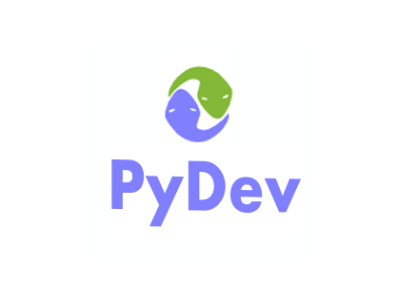
It works as an external plugin for Eclipse. This python IDE is linear in size. You can get the most out of it when refactoring the Python code, analyzing it, or employing debugging graphically. Ultimately, PyDev is a robust python interpreter.
It is one of the best IDEs for Python when discussing open-source ones. Developers Can enjoy flexibility in vast amounts because it is a plugin for Eclipse.
Eye-catchy features:
- Type: IDE
- Price: Open source
- Platform support: Windows, Mac, Linux, QT, etc.
- PyDev gets you auto code completion, Django integration, and code coverage features.
- It supports tokens browser, PyLint integration, and remote debugging.
- PyDev also helps you in analyzing f-strings.
- It supports black formatter, Mypy, and virtual environments.
- PyDev comes with many rich features such as code analysis, type hinting, debugging, and refactoring.
PyDev Pros:
- PyDev offers the users smart syntax highlighting, code folding, multi-language support, and parser errors.
- It provides you with an excellent outline view.
- This IDE has a fantastic interactive console.
- PyDev helps the developers in marking occurrences.
PyDev Cons:
- The plugins may sometimes create issues.
- If the application is too large, the performance of the IDE might decrease.
5. Idle

IDLE is written in Python. It is the best IDE for Python that integrates with the default language. It is a very simple IDE as well, and best for beginners.
IDLE is also cross-platform. So, a trainee who has started practicing in python development finds it amazingly helpful. However, it becomes disposable when the newbie is done with learning basics and moves forward to advanced levels.
Main features:
- Type: IDE
- Price: Open source
- Platform support: Windows, Mac, Linux, QT, etc
- IDLE supports editable configurations, browsers, and dialog boxes.
- You get a robust debugger with IDLE with global views, local spaces, and continuous breakpoints.
- IDLE provides you with a multi-window text editor. Therefore, the developers can explore exotic features like smart indentation, Python colorizing, undo, call tips, etc.
- This programming language is purely developed in Python. And it involves the Tkinter GUI toolkit. These factors have increased the flexibility of IDLE for the developers.
IDLE Pros:
- Like other significant Python IDEs, IDLE supports syntax highlighting, smart indentation, and auto code completion.
- A python shell integrated with a highlighter comes with IDLE.
- A combo of a debugger and a call stack visibility will boost your performance.
- You can search within any window when you are using IDLE. You can search through several different files. It also allows you to replace them within the window editor.
IDLE Cons:
- IDLE can’t offer you the numbering of the line option.
- IDLE sometimes lacks focus. You might go through some usual issues while using IDLE, just like: you can’t copy to the dashboard directly.
6. Wing
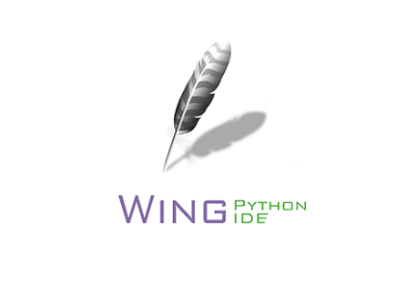
The Wing is another powerful yet best IDE for Python. It offers you plenty of attractive features. An excellent python editor and a robust debugger can be boons for Python programmers.
Eye-catchy features:
- Type: IDE
- Price: $95-$179/ User (for a commercial purpose)
- Platform support: Windows, Mac, Linux, etc
- It helps the coders in test-driven development with pytest, Django, and unit testing framework.
- Wing also provides you with the facility of auto code completion.
- Wing shows you the errors in a feasible manner. It assists the users in doing line editing as well.
- You can move around the code with a go-to definition.
Wing Pros:
- Wing IDE comes with an integrated exception handling tab. It helps you to debug the code.
- When the trial version expires, this best IDE for Python gives the coders 10 minutes to migrate their app.
- The source browser of Wing shows you all the variables used in the script.
- The exact function that Wing provides you helps you to enhance your productivity.
Wing Cons:
- The commercial version of Wing is way too costly.
- In the beginning, you might find the Wing interface somehow intimidating.
7. Visual studio code

Here we are talking about an open-source code editor that mainly works to develop and debug modern cloud and web projects. Visual studio code combines both development and editing features very smoothly. That’s the reason behind its incredible popularity among python programmers.
Eye-catchy features:
- Type: Source code editor
- Price: Open source
- Platform support: Windows, Mac, Linux, etc
- You get an excellent syntax highlighting with it, as usual. And, there will be an auto code completion feature with IntelliSense.
- It completes syntax based on the variable function definition, type, etc.
- It is highly customizable and extensive. So, you can easily add themes, debuggers, languages, etc.
- The Visual Studio gets you a powerful debugger.
- It strongly integrates with GIT. Now you know that you can run a GIT operation like commit, push, etc., through it.
Visual Studio Code Pros:
- Visual Studio supports the implementation of vertical orientation. Along with that, it comes with a multi-split window feature.
- You will get a smart interface and a great layout.
- You can use many plugins from the VS Code marketplace.
- Visual Studio gives the users multi-language support. It offers you many other functionalities that you won’t get from other languages.
Visual Studio Code Cons:
- The searching procedure is prolonged.
- It takes excess time to launch at the beginning.
8. Vi / Vim

Vim is one of the most popular python text editors. It helps to create and modify all the highly configurable texts. The developers behind Vim are working great to improve the code editor.
You will see it is giving a better performance after every new release. It is a very stable open-source text editor. You can use it as a standalone application and a command-line interface.
Captivating features:
- Type: Source code editor
- Price: Open source
- Platform support: Windows, Mac, Linux, Android, IOS, MorphOS, AmigaOS, etc.
- It is very persistent.
- Vim offers you a multilevel undo tree.
- It provides the users with robust integration and replaces functionality.
- This Python IDE supports almost all programming languages and files.
Vim Pros:
- Vim supports non-programming apps as well. It is a scarce feature that most code editors don’t have.
- There are two different modes to work- normal mode and editing mode.
- Vim offers an original programming language. It lets the developers modify custom functionality.
- Developers can save and reuse the Vim strings as command sequences.
Vim Cons:
- The utilization of Vim is limited as a text edit tool.
- There is no unique color for the pop-ups.
- Vim can’t provide you with an easy learning curve.
- It’s not beginner-friendly.
9. Rodeo

You can consider Rodeo the best IDE for Python for data-science-related tasks. It helps the developer to plot the issues and collect information from several resources.
You can use Rodeo when you are experimenting in interactive manners.
Eye-catchy features:
- Type: IDE
- Price: Open source
- Platform support: Windows, Mac, Linux, etc
- Rodeo helps you interact, compare, inspect, and plot the code.
- You will get all the needed functions for machine learning and data science-related tasks.
- You get features like syntax highlighting, auto-completion of code, and python-support.
Rodeo Pros:
- It is highly customizable and lightweight.
- Rodeo helps you to write the code faster.
- It can auto-update its newest version.
- You get both a Python console and a text editor simultaneously.
- Rodeo involves all the supporting documentation at the last tab. It helps you to have a better understanding.
Rodeo Cons:
- The Rodeo is not maintained efficiently.
- The company staff doesn’t provide the users with any extended support facilities.
10. Thonny

Are you among those who don’t have any prior experience in Python development? Then, Thonny will be the best IDE for Python for you.
This IDE has a bunch of simple and basic features. Even a new coder will also find it no challenge to understand them. It works best when you are using the virtual environment.
Best features:
- Type: IDE
- Price: Open source
- Platform support: Windows, Mac, Linux, etc
- It helps the users understand the impact of the program and shell commands on the python variables.
- Thonny comes with a simple debugger with F5, F6, and F7 keys.
- It helps the coders to check how Python evaluates the written expressions.
- Thonny helps you with features like auto code completion and highlighting.
Thonny Pros:
- Thonny helps the coders to highlight the spots and explain the scopes.
- It is very helpful for beginners.
- Thonny takes care of all the difficulties with other python interpreters.
- It has a very transparent graphical user interface.
- The user can change the mode to explain the reference.
Thonny Cons:
- Thonny takes too much time to create plugins.
- Some features are not helpful enough for the developers.
- The interface design is not up to the mark.
Which one is the Best IDE for Python: Comparison Table
| IDE | Size(MB) | Developed in | User Rating |
| PyScripter | Small | Python, Object Pascal. Delphi | 5/5 |
| PyCharm | Large | Python, Java | 4.5/5 |
| Spyder | Large | Python | 4/5 |
| PyDev | Medium | Python, Java | 4.6/5 |
| Idle | Medium | Python | 4.2/5 |
| Wing | Large | Python, C, C++ | 4/5 |
Frequently Asked Questions (Faqs)
1. What is IDE?
IDE is a development environment used by coders to develop software. It comes with many features such as programming, debugging, compiling, executing, etc. IDE helps you to do all of these tasks in one place. So, the job for the coders gets simpler.
2. What is the difference between IDE and Text Editor?
Both IDE and Text Editor help in developing software. But, Text Editor mainly helps write scripts and modify text or code. On the other hand, IDE helps the developers perform different functions, like running and executing the code, debugging, interpreting, controlling the version, auto linting function, etc.
Also Read:- Python vs PHP – Which One to Choose
Final Takeaway:
Now you have a clear picture of the Python IDEs that are currently ruling the market. We hope each IDE’s best features, merits, and demerits will help you recognize which one will be the best IDE for the Python project you are about to start.
All you now need is a team of dedicated python developers who can deliver you the best quality of work within your budget. Are you wondering where to get them? We are just a call away. Let’s talk!

